EMI Professional Development Program for Faculty: sharpening EMI teaching capability and strategies
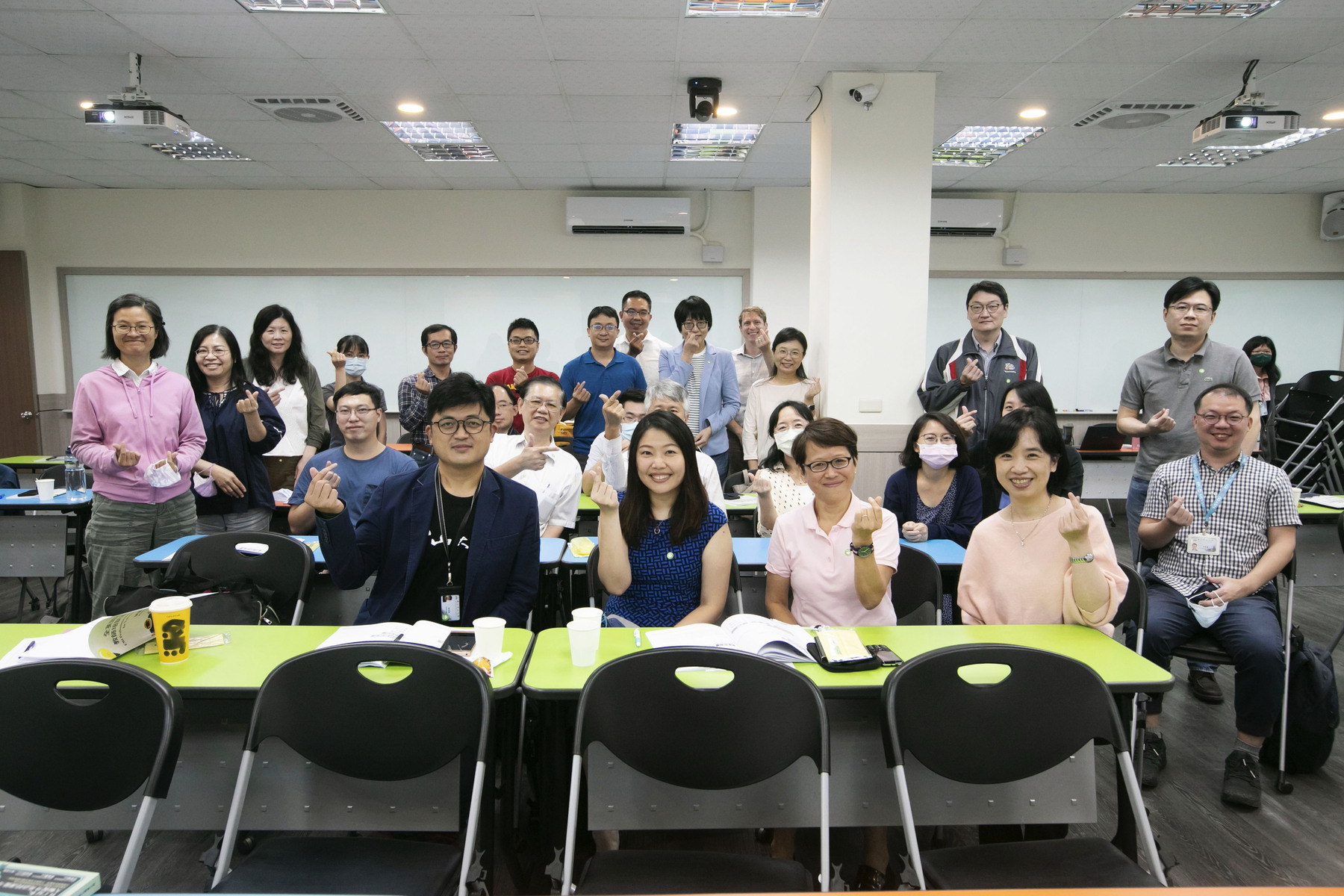
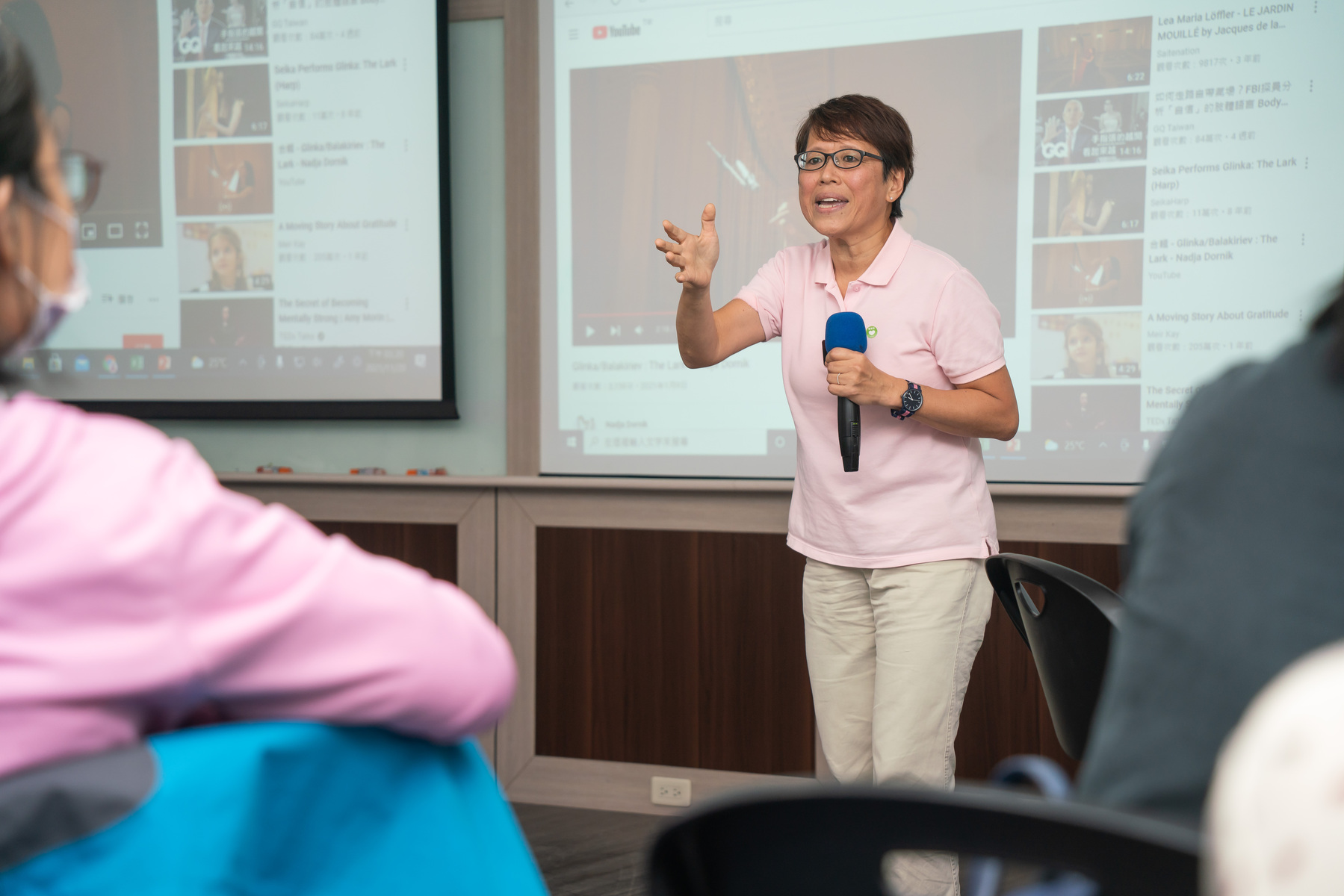
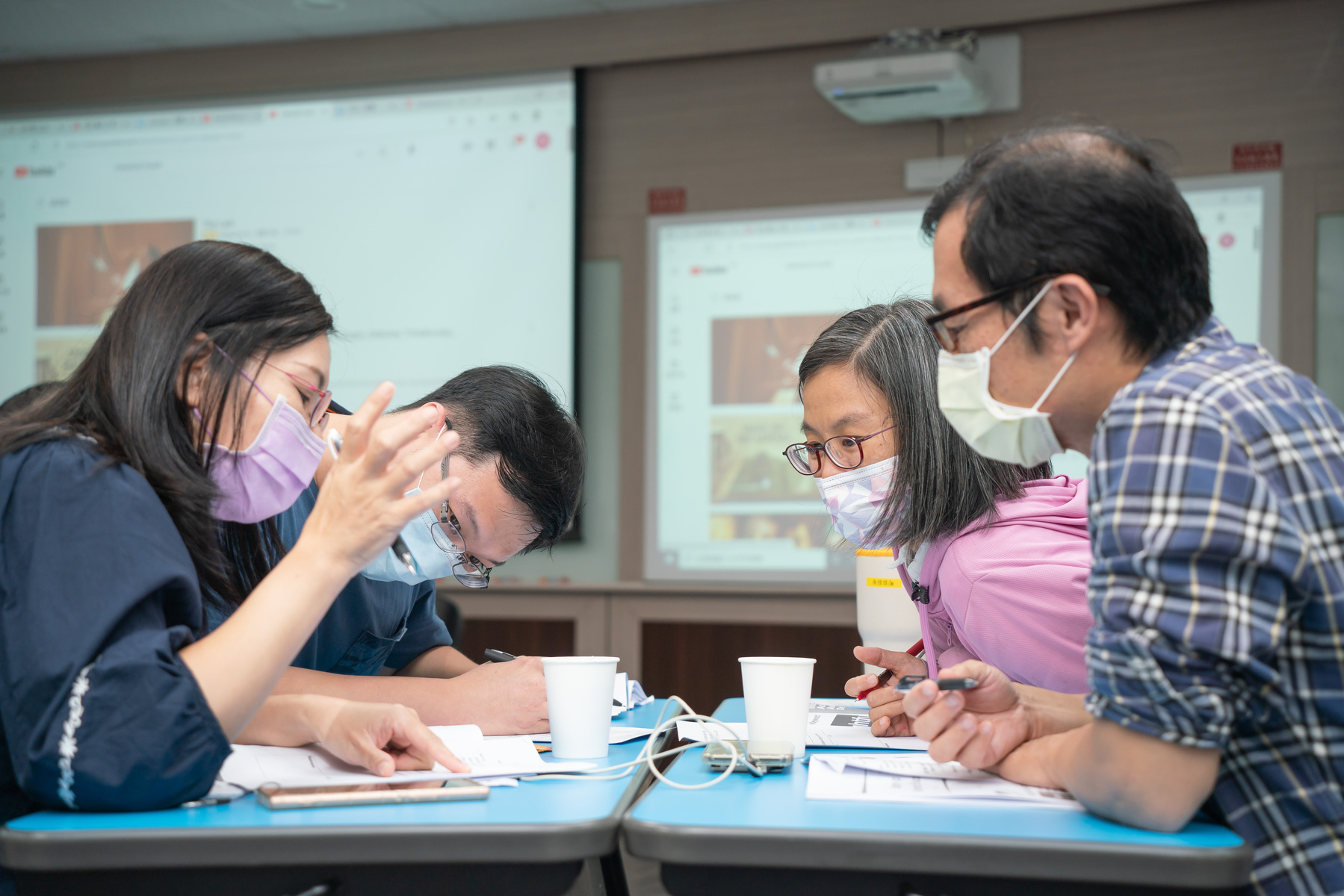
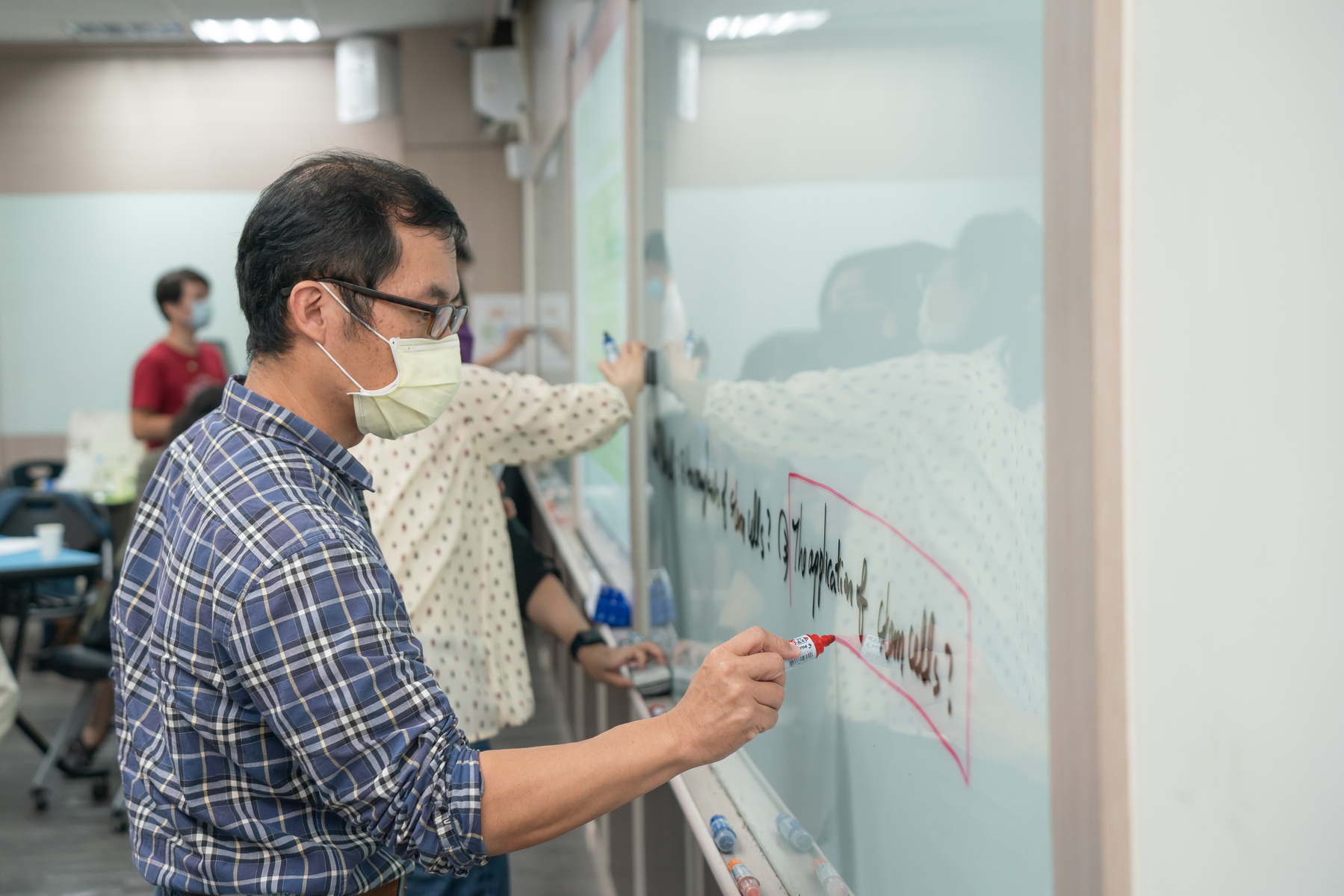
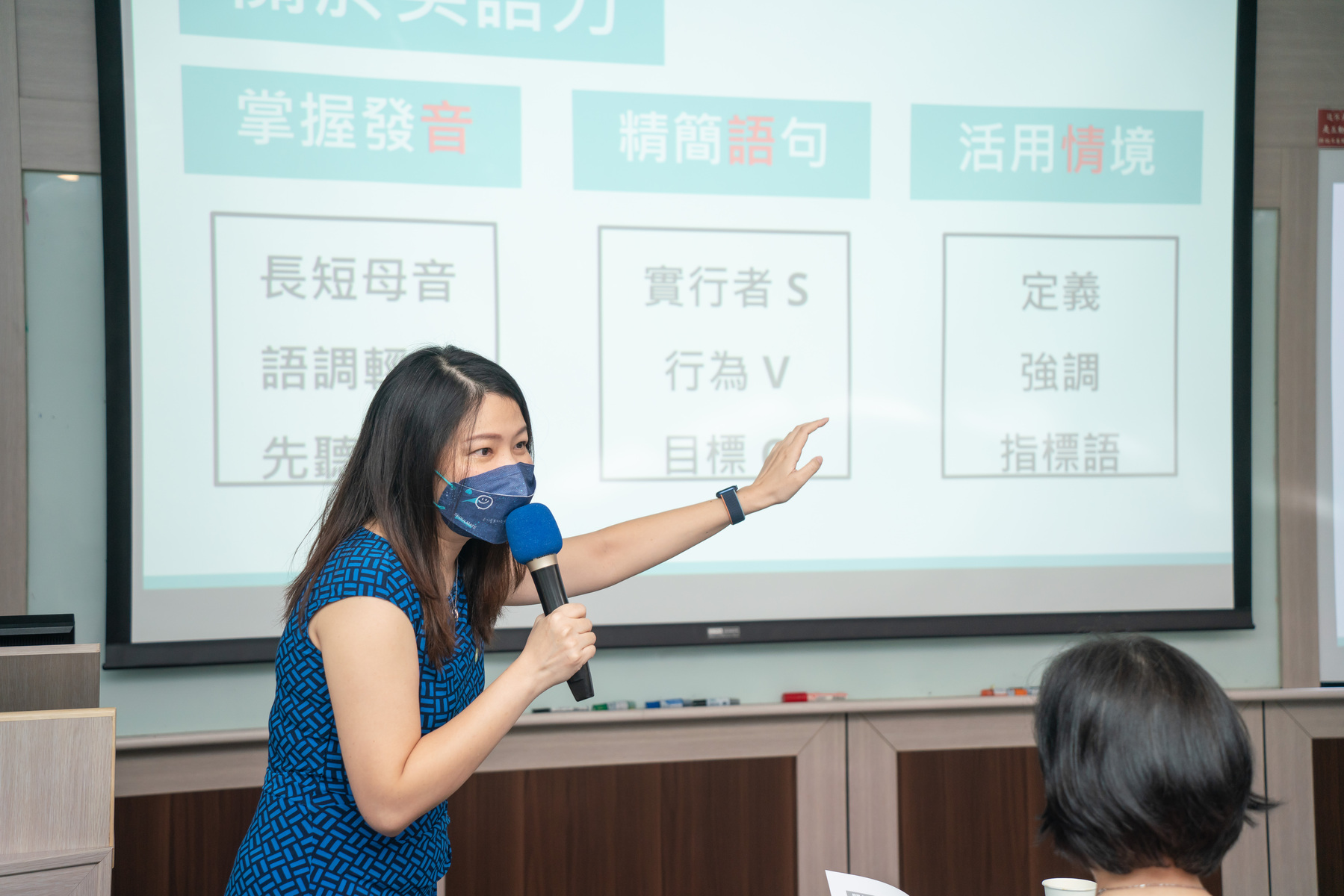
2021-12-23
National Sun Yat-sen University is organizing English Medium Instruction (EMI) training workshop to elevate the faculty’s EMI teaching capabilities. The Southern Regional Resource Center for Bilingual Education has started the EMI Professional Development Program for Faculty designed especially for professors within the region to enhance their EMI teaching abilities. Four speakers experienced in the area of EMI were invited to share their knowledge and tips on different aspects of EMI. In addition to teachers on campus, 24 teachers from National Kaohsiung Normal University, National Taitung University, Kaohsiung Medical University, and I-Shou University participated in the workshop.
Dr. Huey-nah Chou, currently professor and director of the General Education Center at Feng Chia University, opened the workshop by sharing knowledge in the field to bring everyone present to the world of EMI. Her talk was as interactive as her classes: the participants shared their thoughts and ideas through investigation and discussions. As a scholar with background in education, teacher trainings made her understand that “reflecting works far more better than receiving knowledge”. Moreover, since most Taiwanese students are not immersed in an English speaking environment, many are shy when it comes to speaking English or their spoken English is relatively poor. Therefore, the best way to lead a class would be the application of interactive online platforms like Kahoot! By using this kind of platform, every student is able to express their ideas and communicate with teachers on-the-spot during class.
Ms. Szuwei Wu from Language Teaching Research Center at National Yang Ming Chiao Tung University shared useful strategies to elevate EMI teaching skills. Entitled “Tips for English Medium Teaching and Learning”, her clearly structured speech consisted of three essentials: “E” for English delivery, “M” for methods of instruction, and “I” for interests and passion for teaching. For English delivery, she emphasized the idea that “accent does not disturb listeners’ understanding”, but “intelligible pronunciation and clear speech” plays an important role; as regards face-to-face teaching, she introduced the mnemonic phrase “speech segmentation, peer assistance, teachers’ guidance” and demonstrated multimedia platforms like Padlet, Slido and UMU that allow students to send emojis or stickers to show how they feel. Moreover, when elaborating on course content, teachers may adopt strategies like paraphrasing, clarification and repetition to ensure all students follow and understand the lecture.
With the title “A Picture/ Equation is Worth a Thousand Words”, Dr. Nien-Ti Tsou from the Department of Material Science and Engineering in National Yang Ming Chiao Tung University continuously accentuated on effective course design. Being someone who does not regard himself as a top notch in EMI teaching, his theory of building 100% communication between teacher and student is to do ample course preparation before class. Through years of teaching, he recommended that teachers make good use of both hardware (e.g., iPads, Apple pencil) and software (e.g., Goodnotes 5, Notability, Facebook) to provide students with the best possible synchronous online learning and review after class. Also, he advised teachers to use different colors, fonts and figures to highlight focal points in Power Point presentations and manage pace in accordance with the importance of content.
Last but not least, Dr. Rae Lan from the Department of Foreign Languages and Applied Linguistics at National Taipei University introduced EMI activities and evaluation design along with Bloom’s taxonomy to analyze educational goals. From her viewpoint, attaining fine-tuned input is as crucial as having both foreign and local students in one learning environment. She believes interaction should exist between peers in class, not just between the teacher and students. In the era of information explosion, since teachers are no longer the only source of knowledge for students, a good course design should include peer collaboration, self-explanatory projects, and dynamic presentations to generate good learning results. Thanks to EMI Professional Development Program, all participants gained a more comprehensive cognition of EMI teaching.
The EMI Professional Development Program not only helps improve teachers’ EMI teaching skills and quality but also upgrades their actual teaching. Further junior and senior-level EMI training courses are already planned for year 2022. As NSYSU has been selected as one of the Key Cultivation Bilingual Universities by the Ministry of Education, Vice President for Academic Affairs Po-Chiao Lin, who is in charge of the overall planning and management of the Southern Regional Resource Center for Bilingual Education, affirmed the goal of having all graduate courses taught in English and all undergraduate programs offering EMI courses. Diversified English resources have been established on campus, and NSYSU anticipates working with regional teachers to improve their EMI teaching ability.
National Sun Yat-sen University is organizing English Medium Instruction (EMI) training workshop to elevate the faculty’s EMI teaching capabilities. The Southern Regional Resource Center for Bilingual Education has started the EMI Professional Development Program for Faculty designed especially for professors within the region to enhance their EMI teaching abilities. Four speakers experienced in the area of EMI were invited to share their knowledge and tips on different aspects of EMI. In addition to teachers on campus, 24 teachers from National Kaohsiung Normal University, National Taitung University, Kaohsiung Medical University, and I-Shou University participated in the workshop.
Dr. Huey-nah Chou, currently professor and director of the General Education Center at Feng Chia University, opened the workshop by sharing knowledge in the field to bring everyone present to the world of EMI. Her talk was as interactive as her classes: the participants shared their thoughts and ideas through investigation and discussions. As a scholar with background in education, teacher trainings made her understand that “reflecting works far more better than receiving knowledge”. Moreover, since most Taiwanese students are not immersed in an English speaking environment, many are shy when it comes to speaking English or their spoken English is relatively poor. Therefore, the best way to lead a class would be the application of interactive online platforms like Kahoot! By using this kind of platform, every student is able to express their ideas and communicate with teachers on-the-spot during class.
Ms. Szuwei Wu from Language Teaching Research Center at National Yang Ming Chiao Tung University shared useful strategies to elevate EMI teaching skills. Entitled “Tips for English Medium Teaching and Learning”, her clearly structured speech consisted of three essentials: “E” for English delivery, “M” for methods of instruction, and “I” for interests and passion for teaching. For English delivery, she emphasized the idea that “accent does not disturb listeners’ understanding”, but “intelligible pronunciation and clear speech” plays an important role; as regards face-to-face teaching, she introduced the mnemonic phrase “speech segmentation, peer assistance, teachers’ guidance” and demonstrated multimedia platforms like Padlet, Slido and UMU that allow students to send emojis or stickers to show how they feel. Moreover, when elaborating on course content, teachers may adopt strategies like paraphrasing, clarification and repetition to ensure all students follow and understand the lecture.
With the title “A Picture/ Equation is Worth a Thousand Words”, Dr. Nien-Ti Tsou from the Department of Material Science and Engineering in National Yang Ming Chiao Tung University continuously accentuated on effective course design. Being someone who does not regard himself as a top notch in EMI teaching, his theory of building 100% communication between teacher and student is to do ample course preparation before class. Through years of teaching, he recommended that teachers make good use of both hardware (e.g., iPads, Apple pencil) and software (e.g., Goodnotes 5, Notability, Facebook) to provide students with the best possible synchronous online learning and review after class. Also, he advised teachers to use different colors, fonts and figures to highlight focal points in Power Point presentations and manage pace in accordance with the importance of content.
Last but not least, Dr. Rae Lan from the Department of Foreign Languages and Applied Linguistics at National Taipei University introduced EMI activities and evaluation design along with Bloom’s taxonomy to analyze educational goals. From her viewpoint, attaining fine-tuned input is as crucial as having both foreign and local students in one learning environment. She believes interaction should exist between peers in class, not just between the teacher and students. In the era of information explosion, since teachers are no longer the only source of knowledge for students, a good course design should include peer collaboration, self-explanatory projects, and dynamic presentations to generate good learning results. Thanks to EMI Professional Development Program, all participants gained a more comprehensive cognition of EMI teaching.
The EMI Professional Development Program not only helps improve teachers’ EMI teaching skills and quality but also upgrades their actual teaching. Further junior and senior-level EMI training courses are already planned for year 2022. As NSYSU has been selected as one of the Key Cultivation Bilingual Universities by the Ministry of Education, Vice President for Academic Affairs Po-Chiao Lin, who is in charge of the overall planning and management of the Southern Regional Resource Center for Bilingual Education, affirmed the goal of having all graduate courses taught in English and all undergraduate programs offering EMI courses. Diversified English resources have been established on campus, and NSYSU anticipates working with regional teachers to improve their EMI teaching ability.
Click Num:
Share
